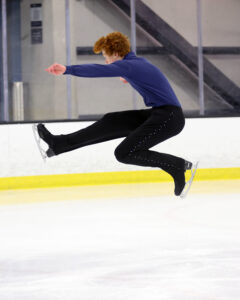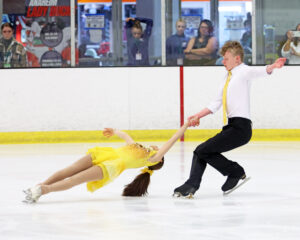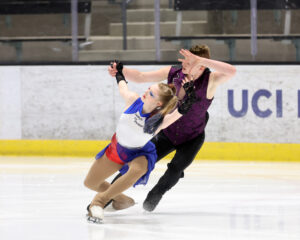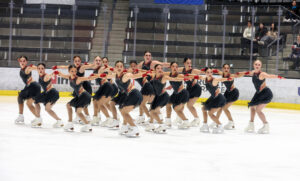Disciplines
Form, style, technique, concentration and the ability to  perform under pressure are the key requirements in women's and men’s singles events. At the higher levels, competition is divided into two segments: the short program, which is skated first, and the free skate. Both programs display the elegance, athleticism and talent synonymous with the sport of figure skating and receive a technical score and a program component score from a panel of judges.
perform under pressure are the key requirements in women's and men’s singles events. At the higher levels, competition is divided into two segments: the short program, which is skated first, and the free skate. Both programs display the elegance, athleticism and talent synonymous with the sport of figure skating and receive a technical score and a program component score from a panel of judges.
Learn More on USFigureSkating.org
 The pairs event combines the athleticism of singles skating with the challenge of unison and the acrobatics of overhead lifts and throws. Each movement is performed in unison, requiring a significant amount of timing and trust between partners. Like singles skating, pairs competitions include a short program and a free skate, with each segment receiving a technical score and a component score, and the team with the most points overall is named the winner.
The pairs event combines the athleticism of singles skating with the challenge of unison and the acrobatics of overhead lifts and throws. Each movement is performed in unison, requiring a significant amount of timing and trust between partners. Like singles skating, pairs competitions include a short program and a free skate, with each segment receiving a technical score and a component score, and the team with the most points overall is named the winner.
Learn More on USFigureSkating.org
Like pairs skating, ice dance features a male and female  skating in unison, but instead of performing jump and spin elements, the team completes difficult dance patterns, step sequences and maneuvers while showcasing exceptional interpretation of music and precise steps. With roots in ballroom dancing, ice dance requires strong technical skating skills and excellent musicality.
skating in unison, but instead of performing jump and spin elements, the team completes difficult dance patterns, step sequences and maneuvers while showcasing exceptional interpretation of music and precise steps. With roots in ballroom dancing, ice dance requires strong technical skating skills and excellent musicality.
Learn More on USFigureSkating.org
 Synchronized skating offers athletes the chance to compete with a team and learn the value of teamwork and camaraderie. Formed in 1956 by Dr. Richard Porter, the sport was known as “precision skating” for the intricate moves skaters perform on the ice together.
Synchronized skating offers athletes the chance to compete with a team and learn the value of teamwork and camaraderie. Formed in 1956 by Dr. Richard Porter, the sport was known as “precision skating” for the intricate moves skaters perform on the ice together.